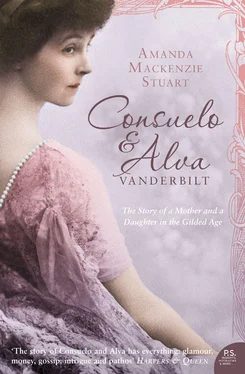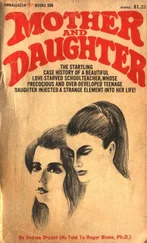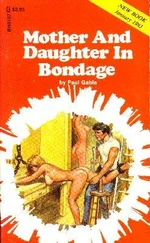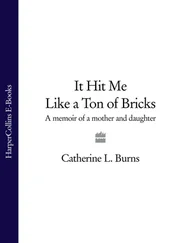Richard Morris Hunt had found a kindred spirit. Although a generation older, he had spent nearly nine years studying in Paris. Like Alva, he was captivated by French art and architecture in his youth, and came to speak French so fluently that he was sometimes mistaken for a Frenchman. Moreover, he studied architecture with Hector-Martin Lefuel, official architect to the Second Empire which had so entranced Alva. Lefuel encouraged Hunt to enter the Ecole des Beaux-Arts in Paris, making him the first and only American architect of his generation to be trained there. Alva and Richard Morris Hunt were not, of course, the only people in New York who were fascinated by the opulent world of Second Empire France but between them they pioneered something new: the introduction of beaux-arts architecture to New York, a style that would define the Gilded Age and dominate the city’s architecture until the First World War.
The core idea at the heart of the beaux-arts was the conviction that the architectural ideal was classical, embracing not just Greek and Roman architecture but the French and Italian Renaissance as well. However, beaux-arts theory also looked to the future with state-of-the-art construction techniques, using modern materials such as plate glass and iron. 22 Indeed the great beaux-arts buildings of New York were only possible thanks to the more remarkable inventions of the industrial revolution, such as the elevator and electric lighting, which allowed corporations to construct great edifices for large numbers of workers. One characteristic of these buildings was the way they dramatised space. According to the architectural historians Foreman and Stimson: ‘Good beaux-arts buildings have a very calculated dramatic effect … Facades and entries were held to be crucial in establishing important initial reactions to the building’s use and importance.’ 23 In public beaux-arts buildings such as the New York Public Library the effect was democratic – anyone gliding down its great main staircase could feel stately. Applied to domestic architecture, however, the beaux-arts philosophy had quite the opposite effect. The style provided sweeping backdrops for America’s new aristocrats in much the same way that Versailles dramatised the ancien régime. Alva would have agreed with Henry James that the secret of its appeal lay in a ‘particular type of dauntless power’. 24
The first beaux-arts collaboration between Alva and Richard Morris Hunt was a house in New York to replace the brownstone house on West 44th Street that she secretly greatly disliked. The design of the new house was undeniably the outward expression of social ambition. Alva was, in effect, pioneering vertically rather than horizontally, creating a space that the aristocrats of New York would find irresistible. However, 660 Fifth Avenue can also be understood as the first great example of Hunt and Alva’s shared vision – a house designed to show American aristocracy what could be done if the great architecture of the European past was combined with the American gift for the modern in America’s own ‘Renaissance’. Alva’s vision for the Vanderbilts went even further, for she felt the family should act like Renaissance merchant princes and become great patrons of the arts. The Medicis of Florence had built houses that were not merely beautiful private residences but an outward expression of the importance of the family. They had ‘represented not only wealth but knowledge and culture, desirable elements for wealth to encourage …’ If the Medicis could do it, so could the Vanderbilts. ‘I preached this doctrine at home and to William H. Vanderbilt’ she wrote later. 25
Persuading her father-in-law, William Henry Vanderbilt, to behave like a Medici, turned out to be surprisingly easy. Liberated from both the Commodore and the will case after 1879, he went into action in an uninhibited manner which astounded New York society, only just coming to terms with his transformation from Staten Island farmer to railroad tycoon. He needed little persuasion that the Vanderbilts should build houses that reflected the family’s wealth, and encouraged his elder son, Cornelius II, to follow suit. The settlement of the will case had the effect of a starting pistol: William H., Cornelius II and William K. all filed plans for houses along Fifth Avenue on the same day. Fifth Avenue north of 50th Street was at that time unfashionable, but by the 1880s the area would be known as ‘Vanderbilt Alley’, setting a tone for sumptuous development in New York for the rest of the century.
660 Fifth Avenue was not the largest of the three houses (the others were at 640 and 1 West 57th Street) but it was certainly the most audacious. Alva drew gasps from her in-laws when she presented her plans to them in 1879:
I knew that they were more elaborate and would have a somewhat staggering effect on the family group. Nor was I mistaken. When the paper was unrolled and they all saw the pretentious plans of a house which would cover almost a city block there was a unanimous gasp from the assembly. With much elation I carefully explained the drawing, elaborating all the details and enjoying the effect on my audience. After a while my father-in-law said crisply: ‘Well, well, where do you expect to get the money for all this?’ ‘From you’ I answered instantly, giving him an affectionate slap on the back. The rest sat appalled at my temerity. To them it was like being families with Established Power. My father-in-law laughed and the money for the house came. 26
660 Fifth Avenue, designed by Richard Morris Hunt for Alva and William K., would become a New York landmark for decades. Based on the sixteenth-century chateau of Blois on the Loire, out of Chenonceau, it also enjoyed fifteenth-century French Gothic accents, and marked a clear turning point for Hunt as he finally slipped his American architectural moorings. Suggesting that Sleeping Beauty’s castle had somehow landed from outer space on Fifth Avenue, its dominant feature was a three-storey tourelle by the entrance. There were gargoyles, flying buttresses and gables. The designs for this house, a masterpiece of aristocratic image-making, suggested something more complex than straightforward conspicuous consumption, or even aristocratic emulation – though both were an important part of its make-up. The most striking note of all was an unmistakeable flight from reality. In Richard Morris Hunt’s conceptual watercolour for 660 Fifth Avenue, ghostly figures inhabited a fairy-tale palace; drawings for other rooms, such as the Supper Room, were peopled by tiny Renaissance princes. 27 In 660 Fifth Avenue, it was as if a deliberate decision had been taken to turn an aristocratic back on the drab, poverty-stricken world a few blocks away – a world into which one could fall so easily without a safety net. This sense of withdrawal to a magical past was a new departure for American architecture; it would make its own contribution to the growing sense of division between rich and poor in New York and it would be copied to the point of pastiche by the early-twentieth century.
Although New York’s architects generally approved of 660 Fifth Avenue, and admired its originality, reaction from New York society was mixed. The pale Indiana limestone of its exterior marked a decisive break with the ugliness of brownstone houses. Every block of limestone was tooled – worked over by a hand chisel. The facades were covered with a riot of rich and decorative carving which caused great consternation: ‘This radical departure from the accepted brown-stone front raised a storm of criticism among my friends,’ wrote Alva. ‘O these whippings from parents and society when the child or adult wishes to be a person and not a member of a mass.’ 28 (Readers of Edith Wharton’s The Age of Innocence may remember that Catherine Mingott’s decision to build a pale, cream-coloured house also marked her out as a morally courageous eccentric.) While she was away in Europe, Alva received a stream of alarmed letters telling her that carvings ‘of naked boys and girls’ were appearing on the rooftop. ‘They failed to see, as many, fatally tainted by Puritanism still fail to see, the exquisite beauty of the human form and of its significance in connection with the special period we were trying to represent,’ 29 she commented.
Читать дальше












